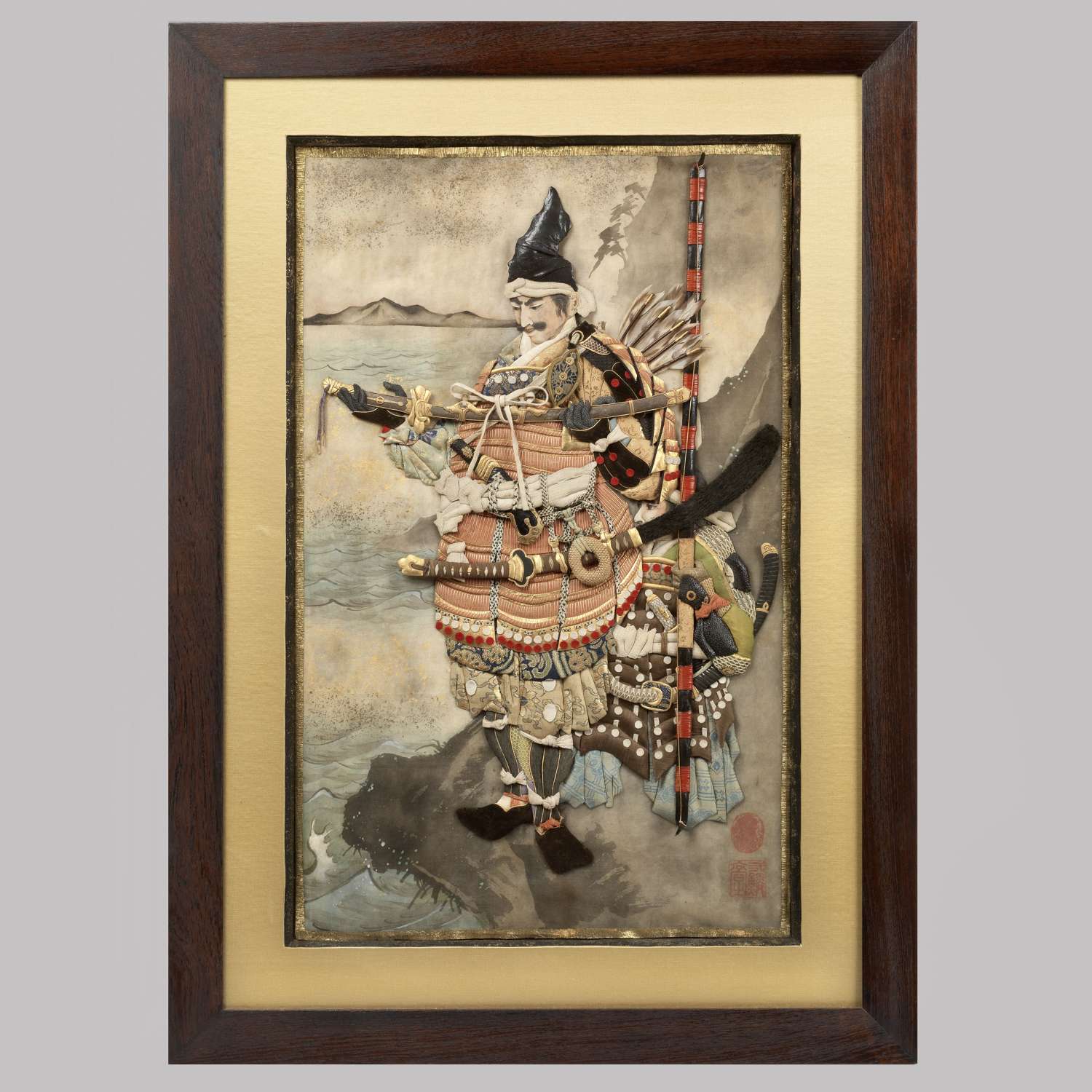





Code: 10193
Dimensions:
Japanese silk panel made in the Oshi-e technique depicting the Samurai Nitta Yoshisada with his attendant kneeling at his side, presenting his sword to the Sea God Ryūjin in order to part the sea waters at Kamakura, signed with a seal Ichirindo Toshikazu 弌鱗堂 late Meiji Period 1868-1912.
Nitta Yoshisada was from the Minatomo clan and lived in the 14th Century. He was ordered by the Emperor Go-Daigo to attack the rival Hōjō clan at the city of Kamakura which was surrounded by steep hills making an army assault very difficult. He was blocked by the rival clan at the Gokurakuji Pass and took the decision to lead his army by sea at Sagami Bay at low tide; he then threw his sword into the waves and offered it to the Sea God who parted the waters. The city was taken and the Hōjō clan defeated.
Japanese Oshi-e was a technique in which pieces were cut from an original drawing and transferred onto thick paper. These forms were covered with brocade, damask, silk or crepe pasted onto a background and then filled with silk wadding to create a padded relief effect. Also very fine silver and gold threads were used to embellish the design.
Reference:
There are two examples of Oshi-e gold silk panels by the craftsman Seppō in the recent Exhibition at the Ashmolean Museum in Oxford “Threads of silk and gold, Textiles from Meiji Japan” catalogue pg. 178-180.
All our pieces come with a BADA Certificate of Provenance (The British Antiques Dealer's Association) and are inclusive of free worldwide shipping & insurance.